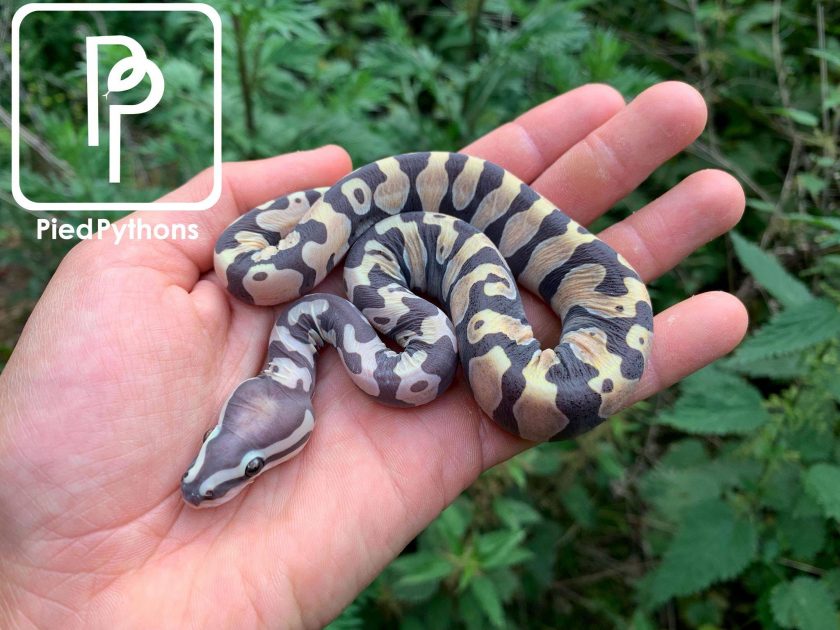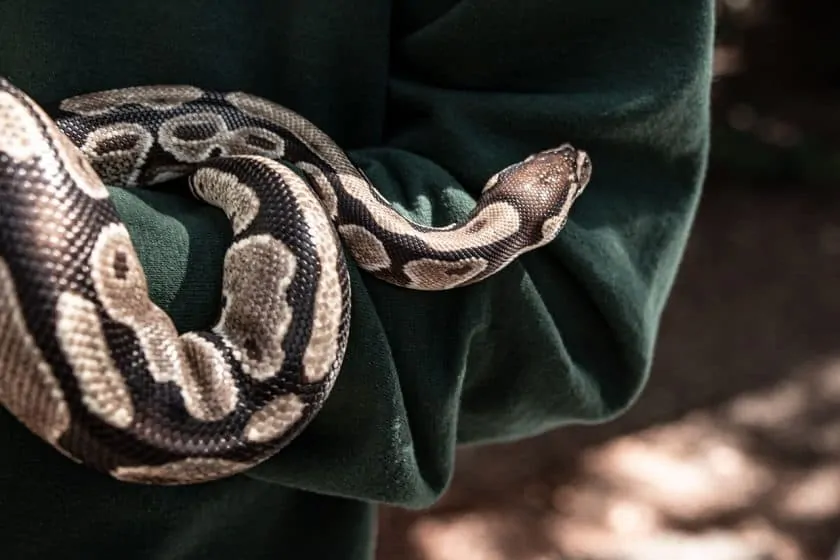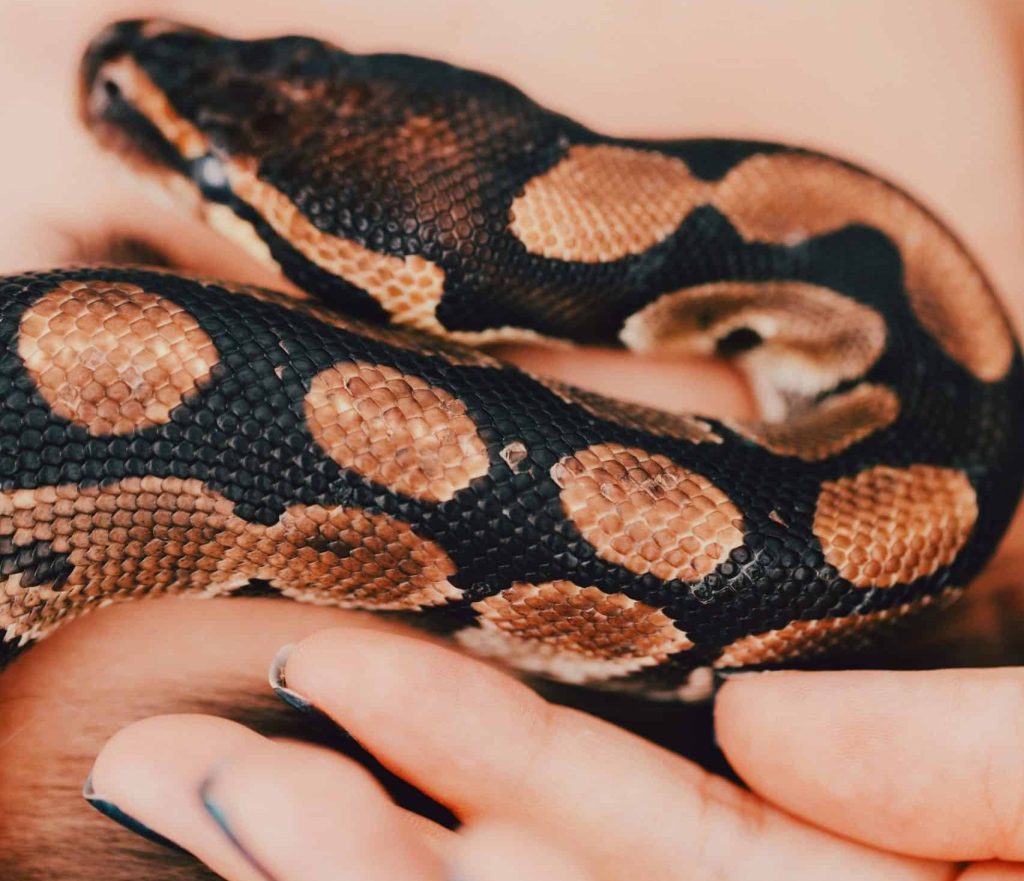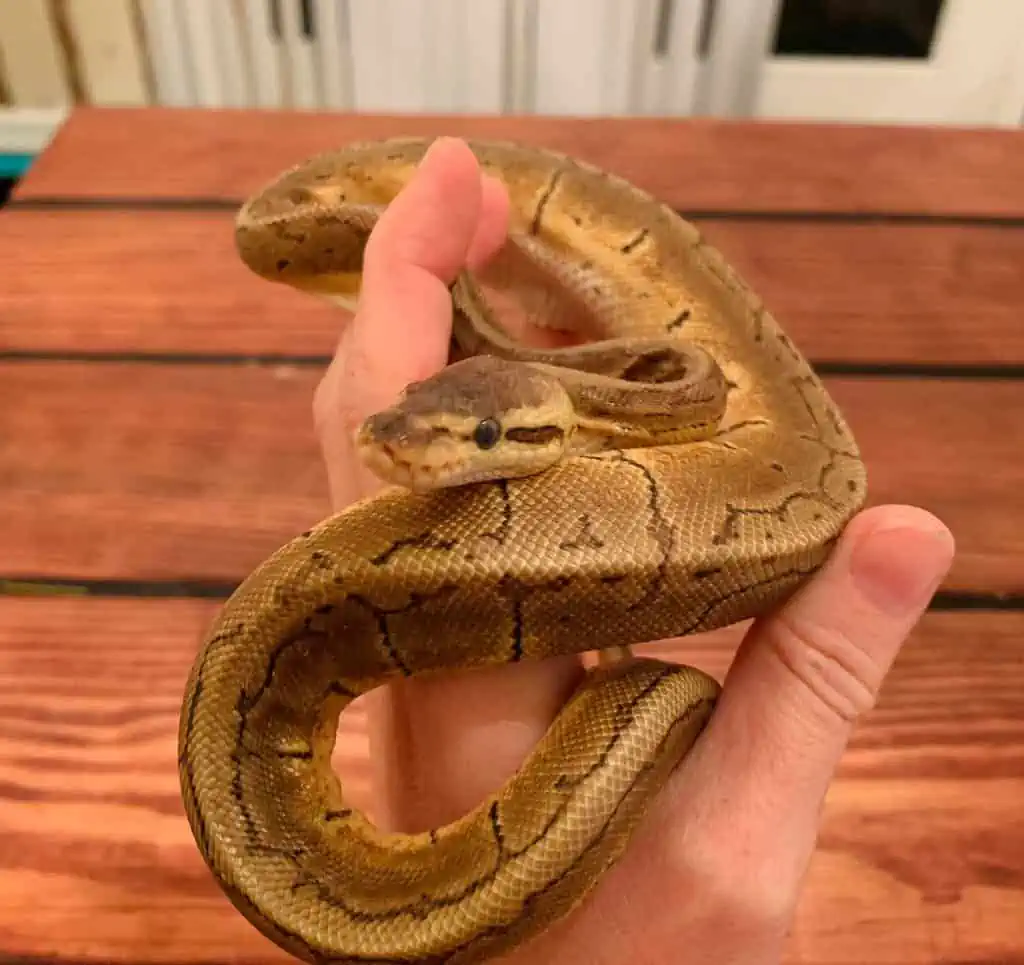Handling your ball python is vital in creating a bond and socializing with them. It is also essential for proper care, as it allows you to check for signs of illness and unwanted stress. However, tackling a ball python might be daunting, but you can still have an enjoyable experience with your pet by employing the mid-body hold technique and adhering to these helpful tips.
- Wash hands before handling
- Stay in sight when approaching slowly
- Let your pet smell you
- Pick up the snake
- Let it settle
- Move with the snake
- Place your pet back in its enclosure
Although frequent handling of ball pythons is essential to maintain their docility, there are certain occasions when it’s best not to pick up and handle them, such as:
- Right after you brought it home
- During shedding period
- After feeding
- When injured
- When under stress
In this article, we’ll delve into the correct way to handle your pet, why it’s so essential, potential issues that come with over-handling them, and when you should avoid touching them.
Do Ball Pythons Like Handling?
Although ball pythons aren’t known for being overly affectionate, they can handle regular handling without distress, according to Applied Animal Behavior Science. Some might even enjoy getting out of their tanks and having some exercise while you interact with them!
However, if the snake is exhibiting defensive behavior, it’s because it perceives you as a predator or an imminent threat – in which case it’s best not to push your luck.
How Long Should I Wait Before Handling a New Ball Python?
When you first bring your precious ball python home, it may be overwhelmed and anxious due to the long journey and new environment. Give them some time to become acclimated before attempting any handling activities to reduce their stress levels.
If you handle your new ball python too hastily, they may interpret it as a sign of danger and try to protect themselves.
As a general rule, wait for at least one to two weeks after your pet consumes its first meal before attempting to handle them. By allowing the time for digestion and acclimation, you can ensure that both you and your new companion have an enjoyable experience with bonding.

How To Handle a New Ball Python for the First Time
As a new ball python owner, the process of handling your snake might seem intimidating. But fear not! Here I have broken down the handling process into simple steps so that you can feel confident with every move.
Firstly Wash Your Hands
Before handling your snake, it is essential to wash your hands thoroughly. This eliminates potentially dangerous bacteria, viruses, and parasites from coming into contact with the reptile and ensures that its sensitive sense of smell does not pick up on any noticeable human scent. Ball pythons have an incredibly sharp olfactory, enabling them to detect prey by picking up even the faintest scents, like cologne or perfume chemicals, in the air!
Even the faintest trace of a feeder’s scent on your hands can alert your ball python, triggering an instinctive feeding response. So to ensure you don’t accidentally startle or distress it, remember to always wash your hands thoroughly before attempting to handle them.
Stay in Sight & Approach Slowly
When approaching your ball python, make sure that it can see and monitor your movements. Move slowly and stay in its line of sight the entire time so it can acclimate to the situation before you attempt to pick it up.
If the snake is aware of your presence instead of being surprised, it will be much calmer during handling. It’s important for both their safety and yours!
Let The Snake Scent You
The following step is to acclimate your ball python with your scent. This will make it understand that you are not a danger when handling it, and it can take up to one week if this is the first time it’s been brought home.
I advise novice pet parents to begin by placing their hand in its tank for 2-3 minutes twice daily so that their snake has ample opportunity to recognize them and become less fearful of contact with humans.
Pick Up the Snake
Now you’re ready to pick up your ball python. To do this approach the enclosure from a side angle (never the top) and use a mid-body hold technique. It is an effective way of holding many types of snakes, making them feel secure in your embrace.
Firmly grasp your snake around the midsection, with your arm and hand providing support. If you have a larger ball python, it is best to use both hands for additional strength and stability during pickup. Your hand will serve as your snake’s sturdy perch, making them feel comfortable and secure.
Key Points To Remember
- Avoid grasping the snake around its neck or tail, as this can inflict harm and make it hostile to handling.
- When handling your snake, remember never to reach out and pick them up from its level, as this is how predators and prey typically interact. Doing so may make you resemble prey in the eyes of your reptile friend, resulting in an unwanted bite on your digits!
Let It Adjust
When introducing your new snake to being handled, or when it has just come into your home, expect it to be inquisitive as you hold it for the first time. Allow its movements and help support its lower body with both hands. Your ball python will likely attempt to wrap itself around either your forearm or wrist – do not be alarmed! This action is merely a way of ensuring that it does not fall off and secures itself onto its new handling platform.
Move With the Snake
When your ball python is moving around while you’re holding it, don’t restrain or attempt to stop its movements. Instead, remain still and let the snake move as it needs until it calms down. Encourage safety by ensuring that your arms support the weight of the reptile at all times; never allow dangling! Generally, after a few moments of cradling in comfort, they’ll settle into relaxation.
Place It Back in the Enclosure
When you’re ready to return the snake back to its habitat, carefully lower your arm into the tank or cage and allow it to move on its own accord. Alternatively, delicately place it onto the substrate floor.
Signs Your Ball Python Is Ready for Handling
Are you wondering if your ball python is ready to be handled? Here I’ve enlisted some tell-tale signs that will help you decide!
- It won’t react adversely when you open the enclosure.
- Its body language will be relaxed, having an uncoiled posture, even breathing, and no hissing.
- The ball python won’t shy away from you; instead, it boldly emerges from its hiding spot!
- It’ll approach or react calmly toward your hand.
- Your ball python will stay on your hands with a placid demeanor – no quick movements, tail thrashing, or wriggling.
Nevertheless, if a snake is not accustomed to being handled or around people, the usual signs of submission may not be present.
Importance of Handling Your Ball Python
Handling your ball python is not only an enjoyable experience, but it’s also critical to learn for other important reasons:
- Ball pythons should be handled frequently in order to socialize them
- Consistent interaction with the snake will make it accustomed to human contact and help keep its spirit docile.
- Handling your ball python will help you become more familiar with its physical health, such as noticing unusual bumps, lumps, or other changes in skin texture.
- It will also help you become familiar with its body language and behavior.
- It also helps to build trust between pets and owners, which is necessary for effective health care.
- Moreover, this allows your pet to recognize that the cage is opened for reasons other than food!
Now that we’ve discussed the value of handling ball pythons let’s delve into how often you should be interacting with your pet.
How Often You Should Handle Your Ball Python
I recommend that you handle your ball python 1-3 times per week, with the frequency depending on how often it is fed. To protect against regurgitation and ensure proper food digestion, I always urge pet parents to wait 48-72 hours after feeding before handling again. In other words, how many sessions you have with your snake each week largely depends on its feedings!
How Often You Should Handle Young Ball Pythons
In my opinion, the appropriate handling time is once a week for hatchlings and juvenile ball pythons. Remember that their natural defense mechanisms are more robust at this age, so it’s essential to be persistent and gentle when holding them; however, you should never handle them excessively.
How Long Handling Sessions Should Last
There is no hard-and-fast rule on how long you should hold your ball python; the general recommendation is to keep it under 30 minutes. When you’re handling your ball python, observe its behavior carefully so that you can better understand when the time is right for them to be placed back into its terrarium.
Side Effects of Over Handling
Too much handling can stress your snake and affect its behavior, which is Ball Python’s greatest vulnerability. If handled too often:
- Even docile ball pythons may become overwhelmed and bite you.
- It can also cause a ball python to become defensive and unwilling to interact with humans.
- Other serious consequences of too much handling include physical injury due to dropping or rough handling, as well as a weakened immune system, weight loss, and an increased chance of contracting parasites or diseases from the handler.
Signs of a Stressed Ball Python Due to Handling
Here are some signs that indicate your ball python is under stress:
- Refusing to feed
- Regurgitation
- Rapid breathing
- Restlessness 24/7
- Hissing
- Frequent or poor shedding
- Refusing to sleep or hide.
- Constantly striving to break free
- Aggressive behavior, such as striking and biting
If your snake is exhibiting any of these signs, it’s a good idea to stop handling it and allow it time to rest in a dark and quiet environment. If the signs persist, contact a veterinarian for advice.
When To Avoid Handling Your Ball Python
Handling your ball python is essential, but you must also be mindful of when it’s best to let them rest. If mishandled during the wrong times, this can lead to adverse health issues related to stress. To ensure that doesn’t happen, keep in mind these conditions where avoiding handling is critical:
During Shedding Period
When a ball python is in the midst of shedding its skin, it can become defensive and uneasy because they feel exposed. During this period, these snakes abstain from feeding, and their thirst increases – so be sure to keep clean water accessible for them!
Even the most tranquil ball pythons may take on a different persona during this time; therefore, it’s crucial to give your snake some privacy by avoiding any contact with them.
When Injured
When your ball python is injured, avoid handling it at all costs. An injury can cause them to feel more sensitive and anxious; handling it will only worsen their condition.
Only handle an injured snake when providing treatment, cleaning its habitat, or taking it to the vet. During this time, provide them with the best possible care.
Right After Feeding
It is best to abstain from disturbing a ball python that has recently consumed its meal, as this can cause it to regurgitate due to feelings of distress or uneasiness. After eating, the snake needs some time in seclusion for digestion purposes.
Being disrupted whilst doing so may make them feel unsafe and compelled to quickly rid themselves of their food by vomiting, an action that causes temporary harm within the throat area and considerable tension on behalf of the reptile.
To reduce any risk here, I suggest pet parents avoid handling their snake for at least 48 hours or 72 hours for optimal digestion time after eating.
When Under Stress
When your ball python is under duress, it’s always advised to steer clear of handling them. Often, when they feel alarmed or overwhelmed, their defense mechanism kicks into gear which may result in health issues caused by tension.
So instead, let them be until the snake finds its peace again. Besides picking up the animal too often, an incorrect enclosure size may also contribute to anxiety in these creatures; therefore, also give special consideration to this factor.
Final Thoughts
In conclusion, the safety of your ball python should always come first! The best way to ensure that is by learning how to handle them correctly and refraining from doing so in certain circumstances. As long as you’re aware and considerate of their environment and needs, handling can become a pleasant activity for both you and your pet.
What’s your experience with handling ball pythons? Does your pet enjoy it or prefer to be left alone? Share your experience in the comment section below!




